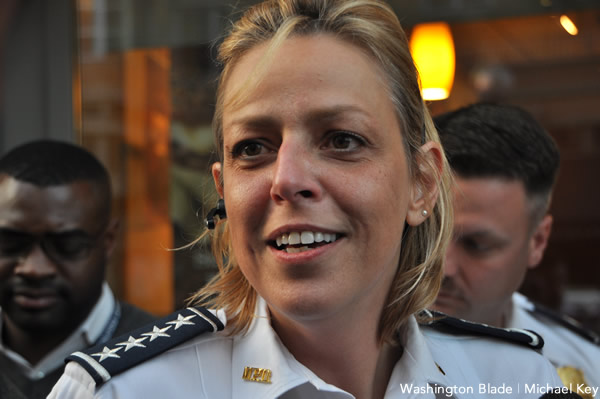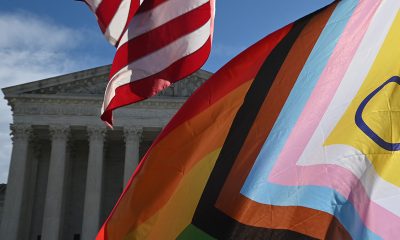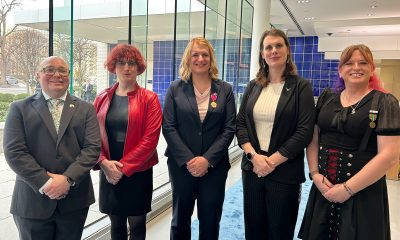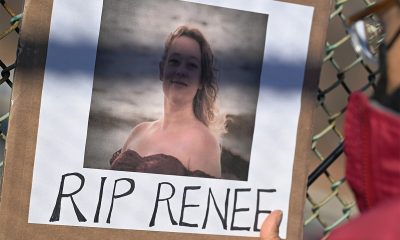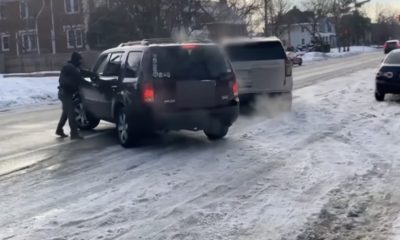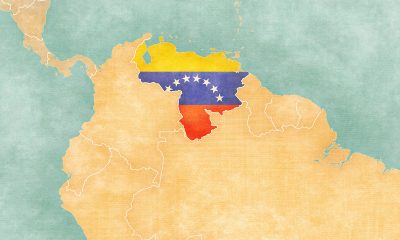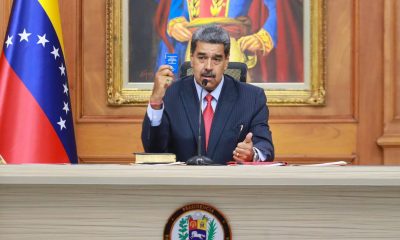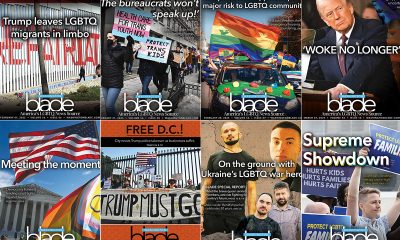Local
D.C. murders down, anti-LGBT hate crimes up
Preliminary data show hate crimes based on sexual orientation rose 19% in 2012
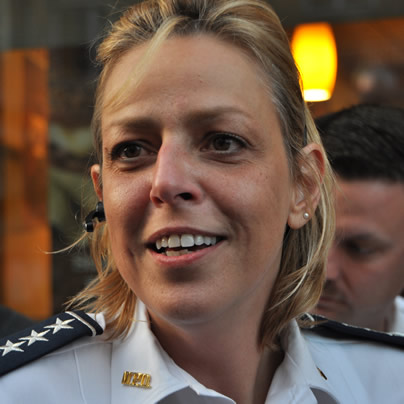
D.C. Mayor Vincent Gray and District Police Chief Cathy Lanier announced at a news conference on Thursday that the 88 homicides reported in the city in 2012 represent the lowest number of slayings within the city in 50 years.
Lanier noted that while robberies and sexual assaults increased in 2012, violent crimes made up just 19.6 percent of the total number of crimes, with “property crime” making up 84.4 percent of the total number of reported crimes in 2012.
Lanier didn’t include statistics on hate crimes in a crime data presentation she gave at the news conference. But preliminary data on hate crimes posted on the D.C. police website this week show hate crimes targeting victims based on their sexual orientation increased 19 percent, from 37 between January and November of 2011 to 44 between January and November of 2012.
The data show the number of hate crimes against transgender residents increased from 8 to 9 in the same 11-month period from 2011 to 2012, representing a 13 percent hike.
Police officials said hate crime data for December 2012 was being tabulated and would be released at a later date.
The total number of reported hate crimes in 2011 (from January through December) was 42 for the “sexual orientation” category and 11 for the category of “gender identity/expression,” according to the data shown on the police website.
The preliminary, 11-month figures for 2012 show that the city recorded a total of 78 hate crimes for each of the categories of victims – sexual orientation, gender identity/expression, ethnicity/national origin, race, religion, disability, political affiliation, and homelessness.
Of that total of 78, hate crimes targeting a victim because of his or her sexual orientation (44) comprised 56.4 percent of the total, the highest of all the categories. Race related hate crimes (12) came in second, at 15.3 percent, with gender identity and expression (9) coming in third, making up 11.6 percent of all reported hate crimes in D.C.
Hate crimes based on a victim’s religion (6) made up 7.7 percent of the 11-month total in 2012. Just one hate crime was reported so far in 2012 for each of the categories of disability and political affiliation. None was reported for the homelessness category in the 11-month period of 2012.
In his remarks at Thursday’s news conference, Gray said he was hopeful that his Project Empowerment program that provides job training for unemployed transgender people would lower the number of anti-trans hate crimes.
Transgender activists have said some of those participating in the job training program were forced to engage in street prostitution to survive prior to entering the program.
“If we can take some of the sense of need from people who feel like the only way they can survive is by engaging in street activity, the sale of sex, if you will – I think that’s going to reduce some of the hate crimes also because it’s not going to make people as vulnerable as they might have been,” Gray said.
“We’ve got a program started now…to try to improve the understanding of people who are transgender,” he said. “So I think in addition to working at it from a law enforcement perspective, we also need to work on it from the perspective of how we improve the conditions under which people who are transgender, for example, are living.”
Although the hate crime data for December 2012 have yet to be released, preliminary reports on the activities of the department’s Gay and Lesbian Liaison Unit show at least three possible anti-LGBT hate crimes took place in December.
Officials with the local group Gays and Lesbians Opposing Violence (GLOV) have said they believe the actual number of anti-LGBT hate crimes is significantly greater than the number reported because some LGBT victims choose not to report hate crimes.
Activists say some hate crime victims report the crime as an assault without informing police they were targeted for their sexual orientation or gender identity. In other cases, according to GLOV, a police officer many not recognize an assault or other crime as a hate crime and doesn’t record it as such on a police report.
Just one LGBT related murder took place in 2012 — the February 2012 stabbing death of transgender woman Deoni Jones, 23, at a bus stop in Northeast D.C. Police arrested District resident Gary Niles Montgomery, 55, for the crime less than two weeks later. Montgomery has since been indicted on first-degree murder while armed and is being held in jail while he awaits trial.
Police have listed the motive of the slaying as robbery rather than a hate crime.
Transcript follows:
Blade: Chief, can you say a little about hate crimes and where they fit into the overall crime statistics you presented today? Are they going up or down?
Chief Lanier: I don’t have any hate crime statistics with me. I’ll get them for you. We were staying pretty much even across the board for hate crimes. We did have some increases in different categories. But I have to get back to you with the specific categories. I’ll get it for you.
Mayor Gray: I think, Lou, if I could add a facet to that. I think you know that we worked hard to try to create a greater acceptance of people who are transgender, who often times are the victims of hate crimes in the District of Columbia. And if we can take some of the sense of need from people who feel like the only way they can survive is by engaging in street activity, the sale of sex, if you will — I think that’s going to reduce some of the hate crimes also because it’s not going to make people as vulnerable as they might have been.
We had a very successful year with our transgender efforts in the last 12 to 15 months. We had three cohorts to go through the Department of Employment Service’s Project Empowerment. We were able to get people jobs. We got a campaign started now, as I think you know, to try to improve the understanding of people who are transgender. So I think in addition to working at it from a law enforcement perspective, we also need to work on it from the perspective of how we improve the conditions under which people who are transgender, for example, are living.
“While we congratulate MPD and the city of Washington in reaching the lowest level of overall homicides in 50 years, the anti-LGBT violence numbers are still going up at an alarming rate and need to be addressed,” said A.J. Singletary, chair of GLOV.
“Even though the low homicide rate was the big story of the day, Chief Lanier rightly included data on other categories of crime” in her presentation at the news conference, Singletary said. “Hate crimes should have been included for comparison purposes as well. While the LGBT community is acutely aware of the violence we face on a daily basis in Washington, other citizens of D.C. as well as the mainstream media often aren’t aware of this large and seemingly ever-growing problem,” he said.
Virginia
Woman arrested for anti-gay assault at Alexandria supermarket
Victim recorded video of Christmas Day attack
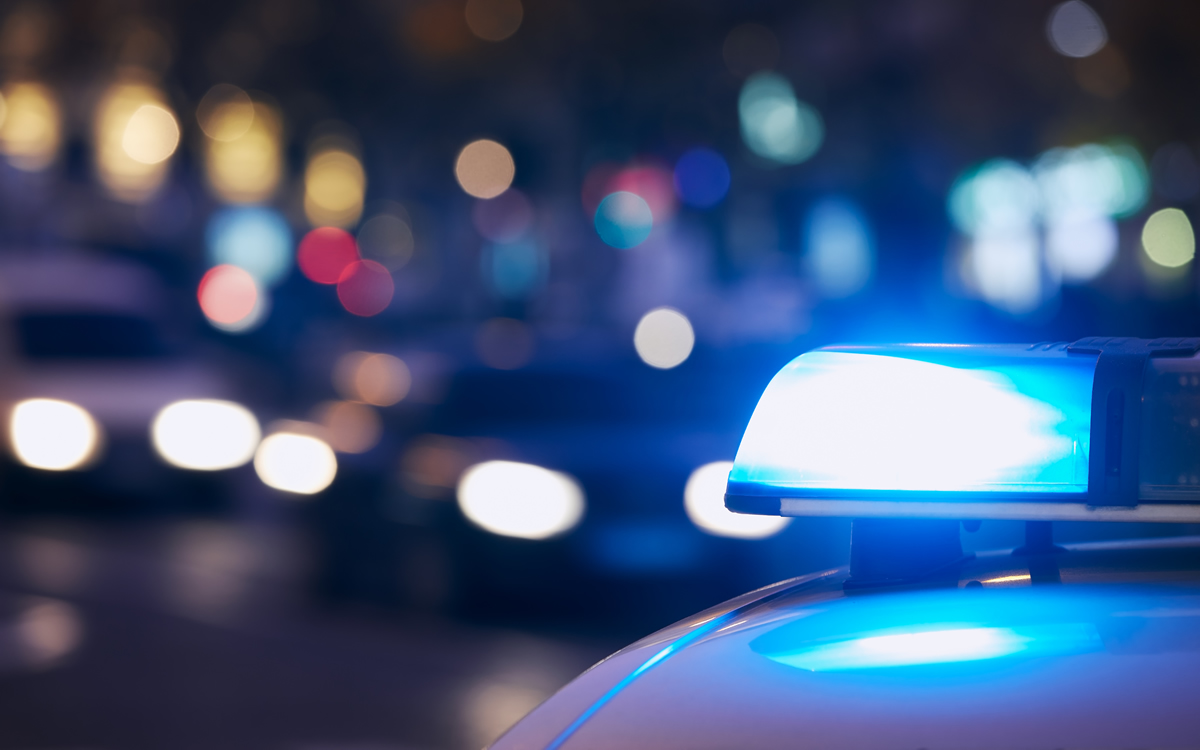
Alexandria police announced on Jan. 12 that a Maryland woman has been arrested for allegedly assaulting a man while shouting anti-gay slurs at him at a Giant supermarket in Alexandria on Christmas Day.
The arrest came after a video of the assault that the victim captured with his phone and on which the woman can be heard shouting anti-gay slurs went viral on social media.
Police identified the woman as Shibritney Colbert, 34, of Landover, Md. Alexandria Police Chief Tarrick McGuire stated at a news conference that police responded to a 911 call placed by the victim and attempted to apprehend the woman, but she drove off in her car before police could apprehend her.
He said following an investigation, Colbert was apprehended and arrested in Prince Goerge’s County, Md., on Jan. 8. He said arrangements were being made for her to be brought to Alexandria where she was expected to face charges of assault and battery, destruction of property, felony eluding, and driving an unregistered vehicle.
The video of the incident shows Colbert pushing a shopping cart she was using in an aisle at the Giant store, located at 3131 Duke St., into the victim and another woman who was trying to help the victim. She can be seen throwing groceries at the victim while shouting anti-gay names. “Boy, get out of here with your gay ass,” was among the words she yelled at him that could be heard on the video.
The victim, who police identified only as a 24-year-old man, could be heard on the video saying he does not know the woman and urging her to “please back up.”
“Based on the victim’s statement, comments exchanged prior to the assault, and the totality of the circumstances, investigators believe the victim was targeted because of his sexual orientation,” police said in a statement.
Tarrick said Colbert’s arrest came at a time when Alexandria police were completing a strengthened hate crime policy calling for detectives to investigate crimes based on hate and for the department to prepare reports on hate crimes twice a year.
“Hate crimes are not just crimes against individuals, they are offenses that threaten the entire community and undermine the fundamental principles of dignity, equality, and safety,” Tarrick said.
Alexandria police didn’t immediately respond to a request from the Washington Blade for a copy of the official police report on the incident.
A link to the video posted on the social media site Reddit in which an unidentified man provides some details of the attack, can be accessed here:
Virginia
Mark Levine running in ‘firehouse’ Democratic primary to succeed Adam Ebbin
Outgoing gay Va. state senator has endorsed Elizabeth Bennett-Parker
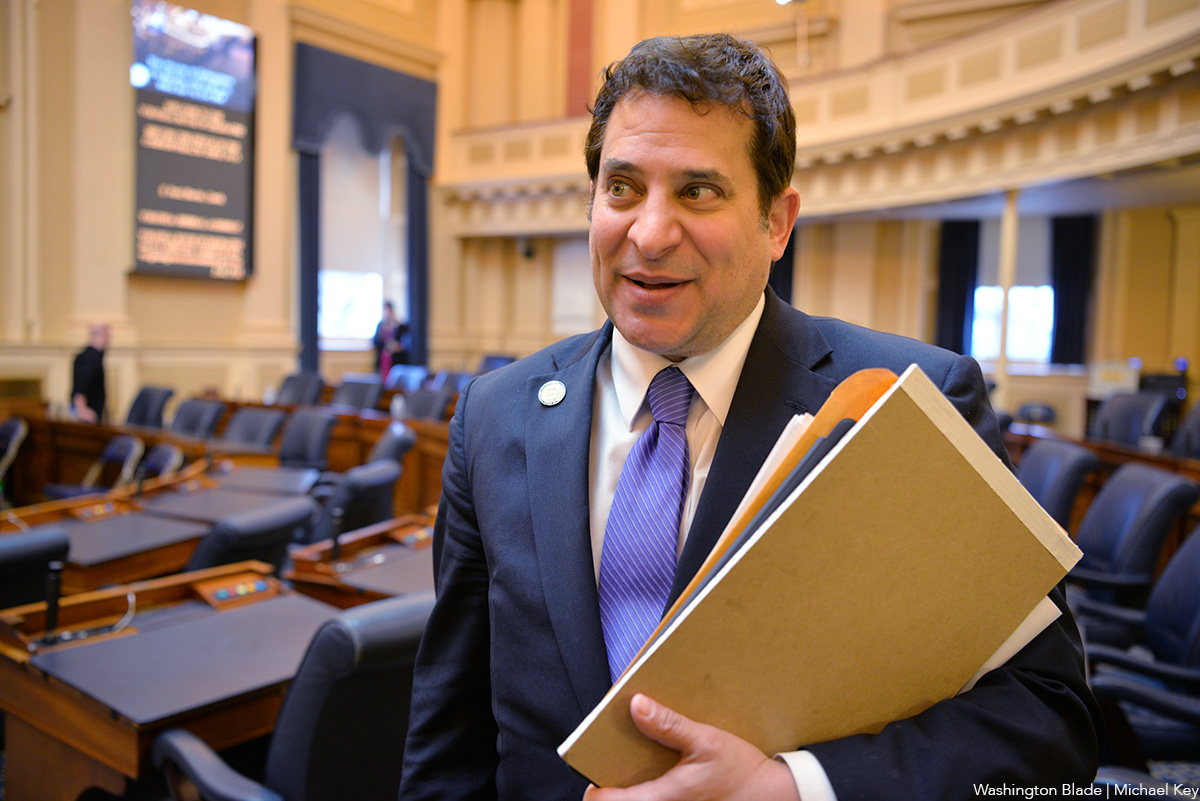
Gay former Virginia House of Delegates member Mark Levine (D-Alexandria) is one of four candidates running in a hastily called “firehouse” Democratic primary to be held Tuesday, Jan. 13, to select a Democratic nominee to replace gay state Sen. Adam Ebbin (D-Alexandria)
Ebbin, whose 39th Senate District includes Alexandria and parts of Arlington and Fairfax Counties, announced on Jan. 7 that he was resigning effective Feb. 18, to take a job in the administration of Gov.-elect Abigail Spanberger.
The Jan. 13 primary called by Democratic Party leaders in Alexandria and Arlington will take place less than a week after Ebbin announced his planned resignation.
According to the Community News of Alexandria publication, a public debate between the four candidates was scheduled to take place one day earlier on Monday, Jan. 12, from 7-9 p.m. at the Charles Houston Recreation Center in Alexandria.
The winner of the so-called firehouse primary will compete in a Feb. 10 special election in which registered voters in the 39th District of all political parties and independents will select Ebbin’s replacement in the state Senate.
The other candidates competing in the primary on Tuesday, in addition to Levine, include state Del. Elizabeth Bennett-Parker, former Alexandria Vice Mayor Amy Jackson, and World Wildlife Fund executive Charles Sumpter.
Another Alexandria news publication, ALXnow, reports that Ebbin, Spanberger, and at least four other prominent Democrats in the Virginia General Assembly have endorsed Bennett-Parker, leading political observers to view her as the leading contender in the race.
“I have worked alongside Elizabeth and have seen her fight for the values of our community,” Ebbin said in a statement, ALXnow reports.
Arlington gay Democratic activist TJ Flavall said Parker-Bennett has attended LGBTQ community events and is known as an LGBTQ ally.
Ebbin’s endorsement of Bennett-Parker over fellow gay politician Levine in the Jan. 13 firehouse primary follows what observers have said is a longstanding rivalry between the two over disagreements around legislative issues.
In 2021, Ebbin endorsed Parker-Bennett when she challenged Levine in the Democratic primary for his House of Delegates seat in the then 45th House District in Alexandria.
Parker-Bennett defeated Levine in that race at a time when Levine, in an unusual move, also ran for the position of lieutenant governor. He also lost that race.
ALXnow reports that in his Facebook announcement of his candidacy for Ebbin’s state Senate seat Levine discounted the relevance of the large number of prominent endorsements that Parker-Bennet has received. In campaigns that last for just a few days rather than weeks or months, “it’s about turnout,” ALX now quoted him as saying.
Levine, an attorney, has a longstanding record as an LGBTQ rights advocate. He worked as a legislative counsel to gay former U.S. Rep. Barney Frank (D-Mass.) before becoming a radio talk show host and TV political commentator in Virginia prior to his election to the Virginia House of Delegates.
The firehouse primary on Jan. 13, which is open only to voters with identification showing they live in the 39th District, will take place from 8:30 a.m. to 7 p.m. in these locations:
Alexandria: Charles E. Beatley, Jr. Public Library, 5005 Duke St.; and the Charles Houston Recreation Center, 901 Wythe St.
Arlington: Aurora Hills Library, 735 18th St. S.
Annandale: New John Calvin Presbyterian Church, 6531 Columbia Pike
Virginia
Gay Va. State Sen. Ebbin resigns for role in Spanberger administration
Veteran lawmaker will step down in February
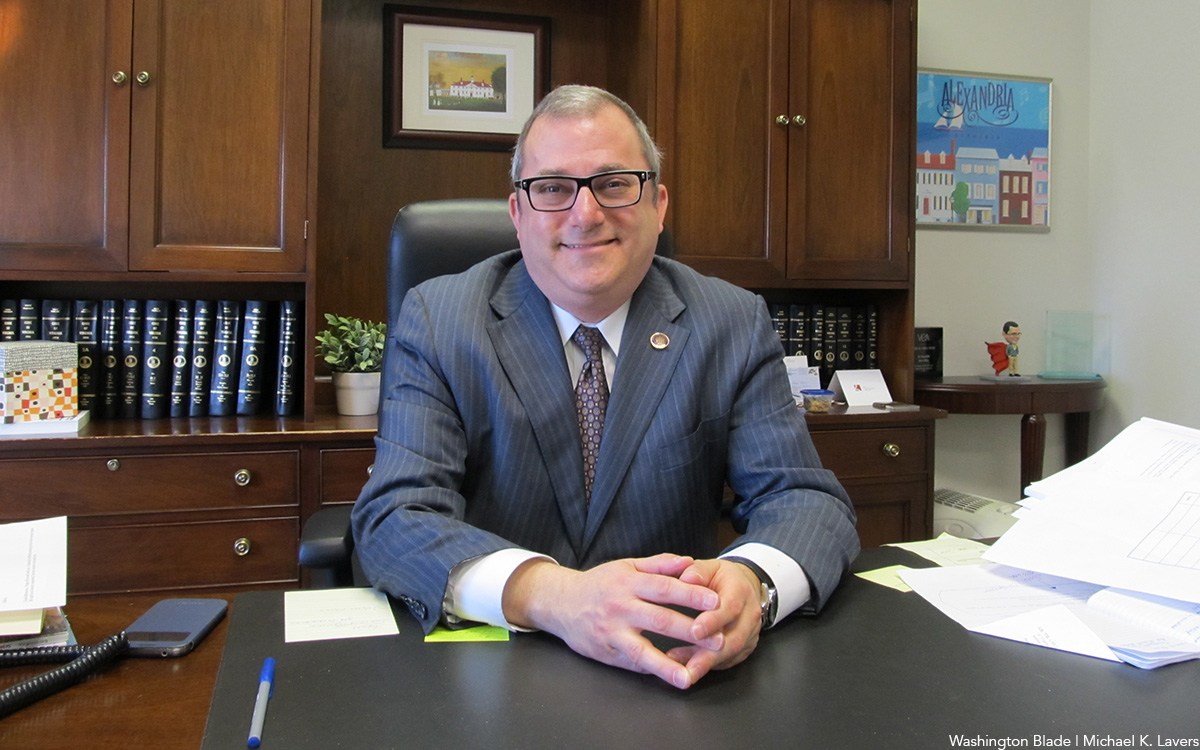
Alexandria Democrat Adam Ebbin, who has served as an openly gay member of the Virginia Legislature since 2004, announced on Jan. 7 that he is resigning from his seat in the State Senate to take a job in the administration of Gov.-Elect Abigail Spanberger.
Since 2012, Ebbin has been a member of the Virginia Senate for the 39th District representing parts of Alexandria, Arlington, and Fairfax counties. He served in the Virginia House of Delegates representing Alexandria from 2004 to 2012, becoming the state’s first out gay lawmaker.
His announcement says he submitted his resignation from his Senate position effective Feb. 18 to join the Spanberger administration as a senior adviser at the Virginia Cannabis Control Authority.
“I’m grateful to have the benefit of Senator Ebbin’s policy expertise continuing to serve the people of Virginia, and I look forward to working with him to prioritize public safety and public health,” Spanberger said in Ebbin’s announcement statement.
She was referring to the lead role Ebbin has played in the Virginia Legislature’s approval in 2020 of legislation decriminalizing marijuana and the subsequent approval in 2021of a bill legalizing recreational use and possession of marijuana for adults 21 years of age and older. But the Virginia Legislature has yet to pass legislation facilitating the retail sale of marijuana for recreational use and limits sales to purchases at licensed medical marijuana dispensaries.
“I share Governor-elect Spanberger’s goal that adults 21 and over who choose to use cannabis, and those who use it for medical treatment, have access to a well-tested, accurately labeled product, free from contamination,” Ebbin said in his statement. “2026 is the year we will move cannabis sales off the street corner and behind the age-verified counter,” he said.

